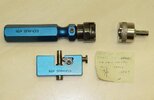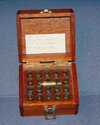Captain*kirk
Member
Watched a very interesting video on neck turning last night. Enough to warrant giving it a try.
However, the lion's share of my 7mm mag cases are nickel plated...I can see that ending badly. So if I did it I'd have to start off with new unplated brass. Anyone familiar with neck turning on standard brass, and opinions? (Worth it/not worth it)
However, the lion's share of my 7mm mag cases are nickel plated...I can see that ending badly. So if I did it I'd have to start off with new unplated brass. Anyone familiar with neck turning on standard brass, and opinions? (Worth it/not worth it)



